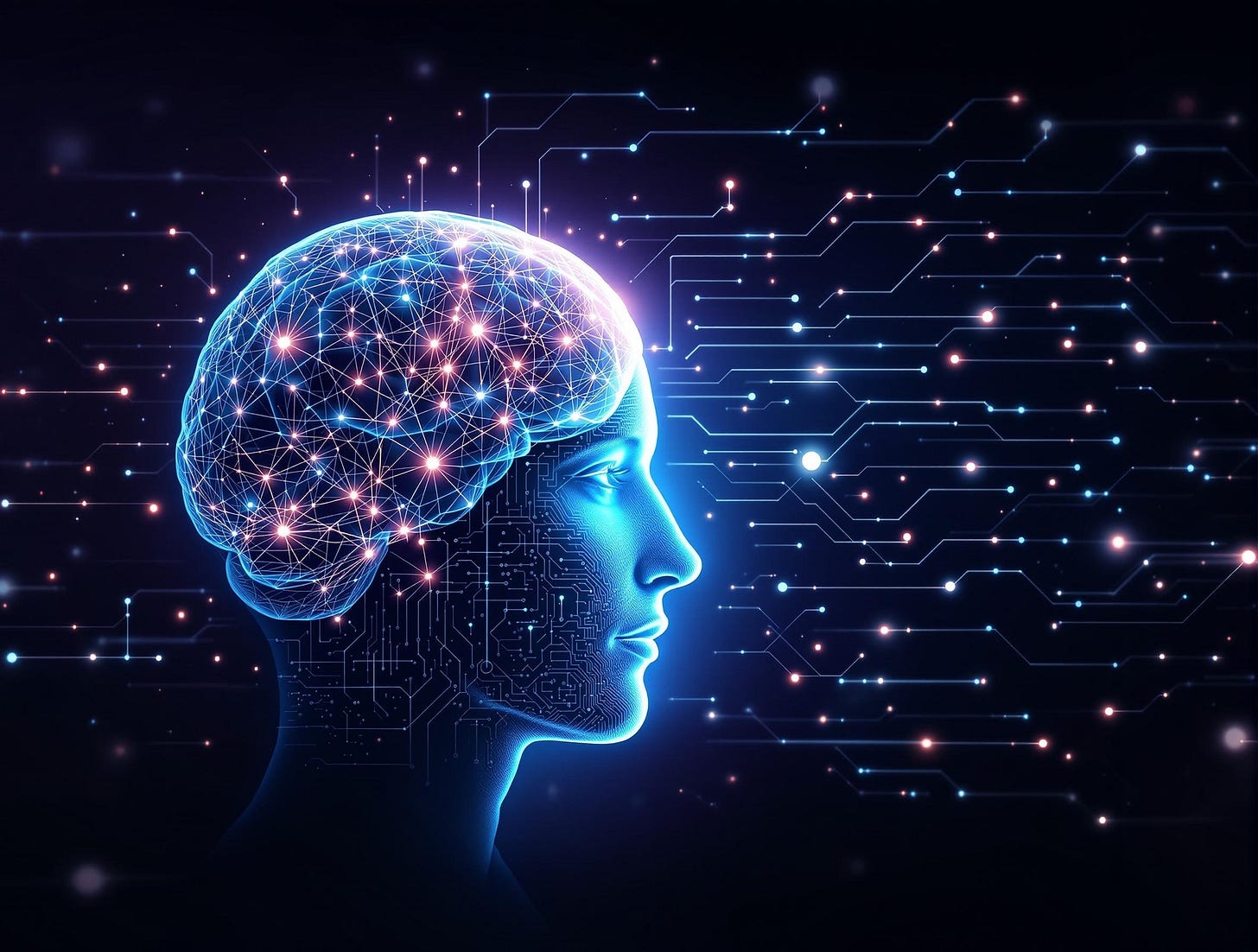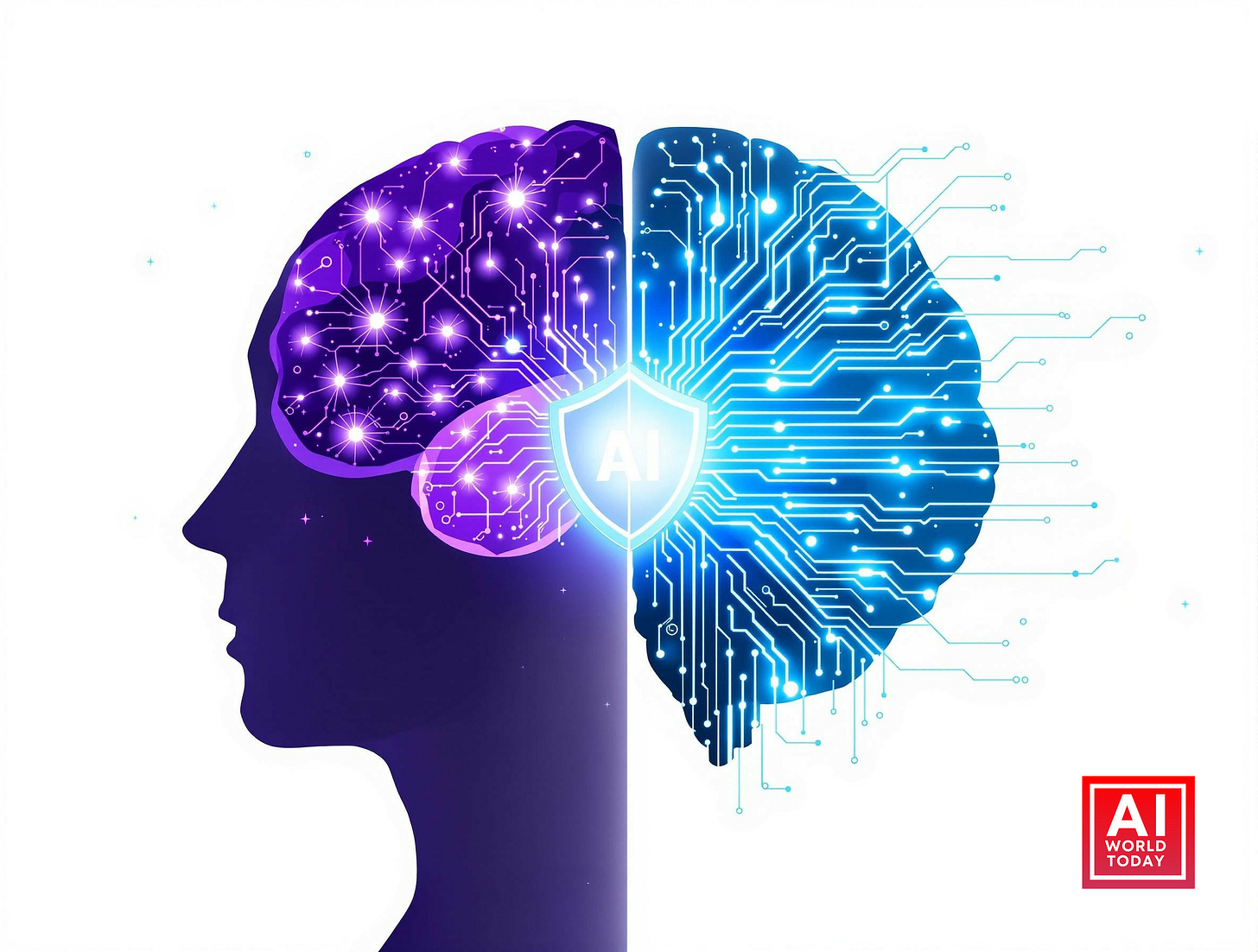Brain-Inspired AI: Neuroscientists Unveil Roadmap for Safer Artificial Intelligence
As artificial intelligence systems become increasingly powerful and prevalent in our lives, concerns about their safety and potential risks have grown. Now, a group of leading neuroscientists and AI researchers are proposing a novel approach to address these challenges - by looking to the human brain for inspiration.
In a comprehensive new roadmap published in the journal arXiv, researchers from institutions including Stanford, MIT, and Yale outline how neuroscience could hold important keys to developing safer and more robust AI systems. The paper, titled "NeuroAI for AI Safety," argues that studying how the human brain processes information, makes decisions, and interacts safely with the world could provide crucial insights for improving the safety and reliability of artificial intelligence.
"Humans are the only known agents capable of general intelligence that can perform robustly even in unfamiliar situations, explore the world safely, understand nuanced communication, and cooperate to achieve goals," explains lead author Dr. Patrick Mineault of the Amaranth Foundation. "These abilities stem from the architecture and learning algorithms of the brain. By better understanding and emulating relevant aspects of human cognition, we may be able to imbue AI systems with similar safety-promoting properties."
The researchers emphasize that their goal is not to replicate human intelligence wholesale, flaws and all, but rather to selectively study and implement specific beneficial properties of human cognition that could enhance AI safety. They propose several promising avenues of neuroscience-inspired research that could positively impact key aspects of AI safety:
Enhancing AI Robustness Through Brain-Like Sensory Processing
One major focus area is reverse-engineering how the human brain's sensory systems process information to build more robust artificial perception systems. Current AI vision and auditory models can be easily fooled by slight perturbations to inputs that humans easily handle. By closely studying and emulating how the visual cortex and other sensory regions in the brain represent information, researchers hope to develop AI systems that are more resilient to adversarial attacks and better at generalizing to unfamiliar situations.
"The human visual system is remarkably robust - we can recognize objects under widely varying lighting conditions, partial occlusion, and even significant distortions," notes vision neuroscientist Dr. Sophia Sanborn of Stanford University. "If we can reverse-engineer some of the key computational principles that enable this flexibility, we may be able to make AI vision systems that are similarly robust."
The researchers propose building detailed "digital twins" of sensory brain regions by combining large-scale neural recordings with machine learning techniques. These computational models could then be dissected to understand the representations and algorithms that enable human-like perceptual robustness.
Importantly, the goal would not be to simply copy biological neural networks, but to extract core computational principles that could be implemented more efficiently in artificial systems. Early work in this direction has already shown promise in developing AI models that are more resistant to adversarial attacks.
Embodied Digital Twins for Safer AI Agents
Another ambitious proposal is to create "embodied digital twins" - virtual simulations of animal brains and bodies that could serve as a testbed for developing safer AI agents. By training large AI models on extensive recordings of neural activity and behavior from animals as they freely explore and interact with their environments, researchers hope to create artificial agents that inherit some of the innate safety constraints and behaviors of biological organisms.
"Animals have evolved sophisticated mechanisms for safely exploring their environments, avoiding harm, and achieving goals," explains neuroscientist Dr. Karen Schroeder. "If we can capture some of this innate intelligence in our AI systems, it could help address concerns about AI agents pursuing harmful objectives or behaving unpredictably in open-ended environments."
While creating fully accurate simulations of animal brains remains a distant goal, the researchers argue that even simplified models trained on real neural and behavioral data could yield important insights. These virtual animals could be embodied in simulated environments to study how they handle novel situations and to develop safer exploration and decision-making algorithms for AI.
Learning from the Brain's Reward Systems
Understanding how the brain's reward and motivation systems work could also provide crucial insights for AI safety. A key challenge in AI development is specifying the right objectives and reward functions to ensure systems behave as intended. By reverse-engineering the brain's intrinsic reward signals and how they shape behavior, researchers hope to develop better ways of specifying goals for AI agents that lead to safer and more aligned behavior.
"The human brain has sophisticated mechanisms for balancing different drives and motivations, allowing us to pursue long-term goals while still responding appropriately to immediate needs and avoiding harmful actions," notes cognitive scientist Dr. Julian Jara-Ettinger of Yale University. "If we can understand and implement similar mechanisms in AI systems, it could help address concerns about AI pursuing simplistic or misaligned objectives."
The researchers propose using a combination of neural recordings, behavioral experiments, and machine learning techniques to infer the brain's intrinsic reward functions. These could then inform the development of more sophisticated and nuanced reward structures for artificial agents.
Advancing AI Interpretability with Neuroscience Methods
Another promising direction is leveraging neuroscience-inspired methods to peer inside the "black box" of complex AI systems and understand how they make decisions. Just as neuroscientists have developed sophisticated tools to study neural activity and link it to behavior, similar approaches could be applied to artificial neural networks to advance the field of AI interpretability.
"Understanding how complex AI systems arrive at their outputs is crucial for ensuring their safety and reliability," explains Dr. Emily Mackevicius, a neuroscientist at AI company Basis. "By adapting some of the causal inference and information theoretic tools we use to study biological brains, we may be able to develop more powerful methods for interpreting artificial neural networks."
The researchers envision a virtuous cycle where advances in AI interpretability methods could in turn lead to new insights and tools for studying biological brains. This cross-pollination between neuroscience and AI could accelerate progress in both fields.
Cognitive Architectures for Safer AI
At a higher level, the researchers also propose developing improved cognitive architectures for AI systems inspired by our understanding of human cognition. This includes incorporating mechanisms for reasoning about uncertainty, maintaining a sense of self, and understanding the mental states of others - abilities that are crucial for safe and cooperative behavior.
"Humans have evolved sophisticated cognitive abilities that allow us to navigate complex social environments, reason about abstract concepts, and cooperate at large scales," notes cognitive scientist Dr. Zenna Tavares. "By developing AI architectures that incorporate some of these higher-level cognitive capacities, we may be able to create systems that are inherently safer and more aligned with human values."
The researchers emphasize that their goal is not to replicate human-level intelligence in its entirety, but rather to selectively implement specific cognitive mechanisms that could enhance AI safety. They propose scaling up existing cognitive models using advances in machine learning and probabilistic programming.
Challenges and Ethical Considerations
While the researchers are optimistic about the potential of neuroscience-inspired approaches to improve AI safety, they also acknowledge significant challenges and ethical considerations.
"We need to be very careful about which aspects of human cognition we choose to emulate in AI systems," cautions Dr. Mineault. "Humans are not perfect, and naively replicating all aspects of human cognition could potentially introduce new risks or biases."
The researchers stress the importance of maintaining scientific rigor and ethical clarity in pursuing these approaches. They also note that some of the more ambitious proposals, like creating detailed whole-brain simulations, remain speculative and may be many years from feasibility.
Additionally, there are important questions about the ethics of creating increasingly human-like AI systems, particularly when it comes to embodied agents or cognitive architectures that may begin to approach sentience. The researchers emphasize the need for ongoing ethical oversight and public dialogue as these technologies develop.
A Multidisciplinary Approach to AI Safety
The roadmap presented by the researchers represents a uniquely multidisciplinary approach to AI safety, bringing together insights from neuroscience, cognitive science, machine learning, and philosophy.
"AI safety is an inherently interdisciplinary challenge," notes Dr. Adam Marblestone, a neuroscientist and AI researcher at Convergent Research. "By combining insights from how biological brains solve these problems with cutting-edge AI techniques, we have the potential to develop fundamentally new approaches to building safer and more robust AI systems."
The researchers emphasize that their proposals are not meant to replace other important work on AI safety, but rather to complement existing approaches with new tools and perspectives.
"There's no silver bullet for ensuring the safe development of advanced AI," concludes Dr. Mineault. "But we believe that the human brain - the only example we have of general intelligence that reliably behaves safely and cooperatively - has crucial lessons to teach us. By studying the brain's solutions to these challenges, we can work towards artificial intelligence systems that are not only powerful, but also reliable, robust, and aligned with human values."
As AI systems continue to advance rapidly, the researchers hope their roadmap will spur increased collaboration between neuroscientists and AI safety researchers. With careful study and selective implementation of the brain's safety-promoting mechanisms, they believe we can work towards artificial intelligence that captures the best aspects of human cognition while avoiding our shortcomings.
The path ahead is long and challenging, but by looking to nature's time-tested solutions, we may find important keys to ensuring that artificial intelligence remains a powerful force for good as it grows ever more capable. The human brain - that three-pound marvel of evolution - may yet have some of its most important lessons to teach us.




